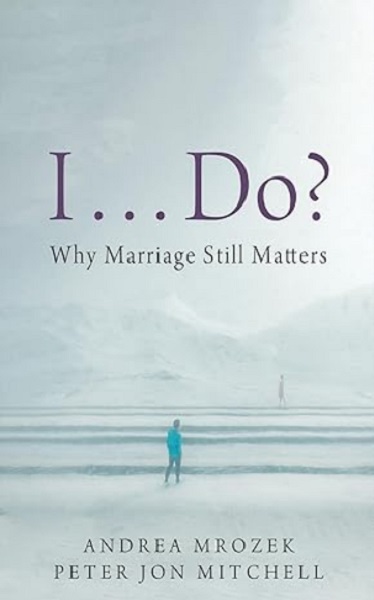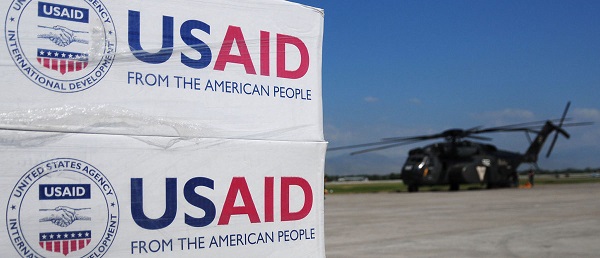Aristotle Foundation
Canada’s immigration system and Islamist terror threats

From the Aristotle Foundation for Public Policy
By Collin May
Arrests linked to terrorism reveal concerns over both imported and homegrown radicalization
Recently, Canada’s immigration system has come under scrutiny due to a series of arrests of individuals alleged to be planning terrorist attacks. The first arrests came in July when a father and son, Ahmed Fouad Mostafa Eldidi and Mostafa Eldidi, were charged with a number of terrorism-related offenses after their arrest near Toronto. The pair immigrated to Canada, where the father obtained his citizenship, prompting a review of immigration screening processes.
This was followed earlier this month by the arrest of Muhammad Shahzeb Khan, who was alleged to be planning a mass shooting at a Jewish center in New York City. Kahn, a Pakistani citizen, was in Canada on a student visa. He was arrested in Quebec on his way to New York.
While these two cases playing out in eastern Canada have drawn the most media attention, we need to look to western Canada, specifically to the province of Alberta, to find several examples of homegrown Canadian terrorism. Earlier this month, Zakarya Rida Hussein, a Canadian citizen living in Calgary, Alberta, was sentenced to six years in prison on terrorism-related charges, including plans to bomb Calgary’s Pride Parade in 2023.
Even more problematic for Canada’s international reputation were two Alberta residents exporting Islamist terrorism to the United Kingdom and Israel. In July of this year, a London jury found Anjem Choudary, the notorious leader of the radical Al-Muhajiroun group, guilty of directing a terrorist group. However, Choudary was not alone in the dock. Khaled Hussein, originally from Edmonton, Alberta, was also convicted of holding membership in the same banned terror organization.
Similarly, in Israel, radicalized Alberta teacher Zachareah Adam Quraishi was killed earlier this summer when he attempted to attack an Israeli security post at Netiv Ha’asara. Quraishi was educated at the University of Alberta.
These incidents suggest a growing problem as it relates to both the importation of terrorists into Canada and the radicalization of Canadian Muslim citizens with the added concern that Canada is now exporting Islamist terror to our allies in the US, Europe, and Israel. This raises the question of what Canadian governments, at the national and provincial level, are doing to counter the importation and domestic growth of terror.
Immigration is primarily a federal responsibility, and opposition Conservative deputy leader Melissa Lantsman has been attempting to hold the Canadian government’s feet to the fire. Over the past few months, Lantsman has been demanding answers as to how the father-son duo was able to immigrate to Canada, and why a student visa was issued to Khan, allowing him to use Canada as a staging ground for attacks in New York.
In terms of the domestic radicalization of Canadian citizens in the province of Alberta, there has been little discussion regarding how this is occurring or what the federal and provincial governments are doing to stem the tide. In Canada, for instance, education is a provincial responsibility, but nothing has been said by the conservative Alberta government about the proliferation of Islamist ideologies in the province or if anything is being done through the education system to counter their impact.
This silence is coming at a time when Canada’s federally-appointed special representative on combating Islamophobia, Amira Elghawaby, recently sent a letter to college and university administrators in Canada recommending the hiring of more Muslim, Arab, and Palestinian professors. Far from expressing concern over the growing Islamist terror threats emanating from Canada, Elghawaby highlighted an alleged dangerous climate on Canadian campuses for pro-Palestinian protesters.
The province of Quebec, no friend of Elghawaby, called for the federal Islamophobia representative to resign, citing her interference with Quebec’s provincial jurisdiction and its stance that academic hiring in the province should be based on principles of secularism rather than religious affiliation. No such call has come from the Alberta government.
That the Alberta government has had nothing to say on these matters should not surprise Canadians given that Alberta’s minister responsible for advanced education, Rajan Sawhney, was the only member of the Alberta provincial government to publicly call for my own resignation as chief of the Alberta Human Rights Commission in 2022.
My crime, in Sawhney’s eyes, was having written an academic review of a book on historic Islamic imperialism penned by renowned British-Israeli historian Efraim Karsh and published by Yale University Press in 2006. Ms. Sawhney’s initial statement condemning my review has since been removed from her Facebook page.
To date, there is little evidence that most Canadian governments, federally or provincially, are overly concerned about Canada’s new reputation, and especially that of Alberta, as exporters of Islamist terrorism. However, as governments grapple with the potential negative blow-back from our allies, this attitude may undergo a rather abrupt change.
Collin May is a lawyer in Calgary, a senior fellow with the Aristotle Foundation for Public Policy, an adjunct lecturer in community health sciences at the University of Calgary, a former chief of the Alberta Human Rights Commission, and the author of numerous articles on the psychology, philosophy, and social theory of cancel culture.
Aristotle Foundation
How Vimy Ridge Shaped Canada

The Battle of Vimy Ridge was a unifying moment for Canada, then a young country. The Aristotle Foundation’s Danny Randell explains what happened at Vimy in 1917, and why it still matters to Canada today.
About the Aristotle Foundation
The Aristotle Foundation for Public Policy is a new think tank that aims to renew civil, common-sense discourse in Canada. As an educational charity, we publish books, videos, fact sheets, studies, columns, interviews, and infographics.
Visit our website at www.aristotlefoundation.org for more of our content.
Aristotle Foundation
The Canadian Medical Association’s inexplicable stance on pediatric gender medicine

By Dr. J. Edward Les
The thalidomide saga is particularly instructive: Canada was the last developed country to pull thalidomide from its shelves — three months during which babies continued to be born in this country with absent or deformed limbs
Physicians have a duty to put forward the best possible evidence, not ideology, based treatments
Late last month, the Canadian Medical Association (CMA) announced that it, along with three Alberta doctors, had filed a constitutional challenge to Alberta’s Bill 26 “to protect the relationship between patients, their families and doctors when it comes to making treatment decisions.”
Bill 26, which became law last December, prohibits doctors in the province from prescribing puberty blockers and hormone therapies for those under 16; it also bans doctors from performing gender-reassignment surgeries on minors (those under 18).
The unprecedented CMA action follows its strongly worded response in February 2024 to Alberta’s (at the time) proposed legislation:
“The CMA is deeply concerned about any government proposal that restricts access to evidence-based medical care, including the Alberta government’s proposed restrictions on gender-affirming treatments for pediatric transgender patients.”
But here’s the problem with that statement, and with the CMA’s position: the evidence supporting the “gender affirmation” model of care — which propels minors onto puberty blockers, cross-gender hormones, and in some cases, surgery — is essentially non-existent. That’s why the United Kingdom’s Conservative government, in the aftermath of the exhaustive four-year-long Cass Review, which laid bare the lack of evidence for that model, and which shone a light on the deeply troubling potential for the model’s irreversible harm to youth, initiated a temporary ban on puberty blockers — a ban made permanent last December by the subsequent Labour government. And that’s why other European jurisdictions like Finland and Sweden, after reviews of gender affirming care practices in their countries, have similarly slammed the brakes on the administration of puberty blockers and cross-gender hormones to minors.
It’s not only the Europeans who have raised concerns. The alarm bells are ringing loudly within our own borders: earlier this year, a group at McMaster University, headed by none other than Dr. Gordon Guyatt, one of the founding gurus of the “evidence-based care” construct that rightfully underpins modern medical practice, issued a pair of exhaustive systematic reviews and meta analyses that cast grave doubts on the wisdom of prescribing these drugs to youth.
And yet, the CMA purports to be “deeply concerned about any government proposal that restricts access to evidence-based medical care,” which begs the obvious question: Where, exactly, is the evidence for the benefits of the “gender affirming” model of care? The answer is that it’s scant at best. Worse, the evidence that does exist, points, on balance, to infliction of harm, rather than provision of benefit.
CMA President Joss Reimer, in the group’s announcement of the organization’s legal action, said:
“Medicine is a calling. Doctors pursue it because they are compelled to care for and promote the well-being of patients. When a government bans specific treatments, it interferes with a doctor’s ability to empower patients to choose the best care possible.”
Indeed, we physicians have a sacred duty to pursue the well-being of our patients. But that means that we should be putting forward the best possible treatments based on actual evidence.
When Dr. Reimer states that a government that bans specific treatments is interfering with medical care, she displays a woeful ignorance of medical history. Because doctors don’t always get things right: look to the sad narratives of frontal lobotomies, the oxycontin crisis, thalidomide, to name a few.
The thalidomide saga is particularly instructive: it illustrates what happens when a government drags its heels on necessary action. Canada was the last developed country to pull thalidomide, given to pregnant women for morning sickness, from its shelves, three months after it had been banned everywhere else — three months during which babies continued to be born in this country with absent or deformed limbs, along with other severe anomalies. It’s a shameful chapter in our medical past, but it pales in comparison to the astonishing intransigence our medical leaders have displayed — and continue to display — on the youth gender care file.
A final note (prompted by thalidomide’s history), to speak to a significant quibble I have with Alberta’s Bill 26 legislation: as much as I admire Premier Danielle Smith’s courage in bringing it forward, the law contains a loophole allowing minors already on puberty blockers and cross-gender hormones to continue to take them. Imagine if, after it was removed from the shelves in 1962, government had allowed pregnant women already on the drug to continue to take thalidomide. Would that have made any sense? Of course not. And the same applies to puberty blockers and cross-gender hormones: they should be banned outright for all youth.
That argument is the kind our medical associations should be making — and would be making, if they weren’t so firmly in the grasp, seemingly, of ideologues who have abandoned evidence-based medical care for our youth.
J. Edward Les is a Calgary pediatrician, a senior fellow with the Aristotle Foundation for Public Policy, and co-author of “Teenagers, Children, and Gender Transition Policy: A Comparison of Transgender Medical Policy for Minors in Canada, the United States, and Europe.”
-

 Fraser Institute1 day ago
Fraser Institute1 day agoBefore Trudeau average annual immigration was 617,800. Under Trudeau number skyrocketted to 1.4 million annually
-

 MAiD1 day ago
MAiD1 day agoCanada’s euthanasia regime is already killing the disabled. It’s about to get worse
-

 Frontier Centre for Public Policy1 day ago
Frontier Centre for Public Policy1 day agoNew Book Warns The Decline In Marriage Comes At A High Cost
-

 Business1 day ago
Business1 day agoPrime minister can make good on campaign promise by reforming Canada Health Act
-

 Addictions1 day ago
Addictions1 day ago‘Over and over until they die’: Drug crisis pushes first responders to the brink
-

 International1 day ago
International1 day agoChicago suburb purchases childhood home of Pope Leo XIV
-

 Daily Caller1 day ago
Daily Caller1 day agoUSAID Quietly Sent Thousands Of Viruses To Chinese Military-Linked Biolab
-

 illegal immigration2 days ago
illegal immigration2 days agoICE raids California pot farm, uncovers illegal aliens and child labor





